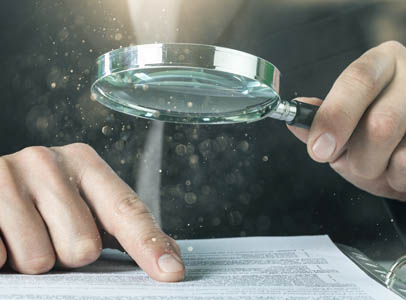PRIOR ART SEARCH
People looking to buy real property customarily carry out due diligence, such as reviewing the crime statistics or the school district for the interesting areas. It’s also customary for inventors to carry out due diligence, generally in the form of a search for any patent or non-patent literature published by another inventor that describes or substantially describes your invention. Prior art searches are beneficial to inventors because the search results may reveal that you are better off saving your money, but also because the search provides the knowledge of the closest prior art, and your patent attorney will be able to draft patent claims that don’t encompass the prior art—therefore improving your chances at obtaining a patent grant.


WHAT IS PRIOR ART?
The term “Art” as used in the patent world generally refers to a technological subject area. Prior art therefore refers to any disclosure within the technological subject area that could have a bearing on whether a patent should be granted for the invention claimed in your patent application. Below is a list of disclosures that typically qualify as prior art:
- patents, either national or international
- published patent application, either national or international
- scientific journal articles, technical owner manuals, magazines, newspapers, books
- advertising, offers for sale, and sales
- public poster presentations, conference handouts, oral presentations at meetings, demonstrations at trade shows
- graduate school theses and dissertations
- websites, videos (e.g., YouTube)
Prior art also includes the actual products or services offered in the relevant marketplace at the time of invention. Thus, prior art can be an actual device or a publication describing such a device.
WHAT TYPE OF SEARCH DO I NEED?
There are a few different types of prior art searches, and it’s important to understand which type you need because the cost for each can vary from about $1500 to about $25,000.
A novelty search is the most common type of search for inventors considering whether to file a patent application for their new inventions or ideas. The searcher is tasked with reviewing numerous databases and public sources for disclosures that may affect the patentability of your invention or idea. The accompanying search report, prepared by a patent attorney, should evaluate the risks associated with filing a patent application in view of the closest prior art, and may also offer opportunities to modify the invention to avoid such prior art.


A freedom to operate search, or clearance search, is highly recommended before a company expends the necessary resources to develop and launch a new product. The search report should analyze the claims of the patents deemed most relevant to the new product and explain whether there is a zone of opportunity for the product to exist without infringing on the prior art. Do not launch a new product without understanding whether the new product would potentially infringe the patent rights of a competitor. From experience, I can tell you that such action can result in several uncomfortable and expensive conversations with your patent attorney after you receive a cease and desist letter from a competitor holding a patent that covers your invention. These conversations become even further stressful if you have just paid for several months of inventory for the new product. This is because that product will likely need to be pulled from the marketplace, and the inventory will constantly remind you that your profits have been replaced with debt. A small investment in a clearance search can save your company from such a nightmare.
A landscape search is a review of the existing technologies in a specific field to determine whether there is an opportunity to patent and/or develop a new product in the field, to evaluate the patent holdings of your competitors, and/or to identify any trends in the technology space.
A validity search focuses on the claims in a published patent application or an issued patent. The search is typically conducted by a business looking to prevent a competitor from obtaining a patent or to invalidate the competitor’s patent. For published patent applications, the U.S. Patent Office accepts Third Party Submissions from anyone who is not an owner or named inventor of a patent application. Such Submissions include the most relevant prior art references found in a search so that the patent examiner handling the patent application is aware of such prior art when determining whether the application should be allowed or rejected. For patents, the prior art uncovered during a search can be used defensively by a party to invalidate the claims of a patent when the patent owner asserts infringement against the party in district court. Alternatively, the searching party can use the prior art to invalidate a patent in an AIA Patent Trial at the U.S. Patent Office.
DO I NEED A NOVELTY SEARCH?
Conducting a prior art search before preparing and filing a patent application is not required. Indeed, it’s the job of the Patent Office to conduct a prior art search to determine whether the invention claimed in a patent application is novel and acceptable for a patent grant. While that is true, a novelty search provides substantial benefits.


Novelty searches are beneficial to the inventor client and to the patent attorney. For the client, a novelty search may reveal an existing invention so similar to your invention that you’re better off investing your money on something else. For the patent attorney, knowledge of the prior art can make the application drafting process more efficient. A skilled attorney can draft the claims that exclude the prior art while including the distinguishing features. In the grand scheme of new product development and commercialization, the relatively small cost of a novelty search is substantially outweighed by such benefits.
CAN I USE GOOGLE FOR A NOVELTY SEARCH?
Inventors generally understand their target market and they often tell me there are no products or services on the market quite like their invention. But, as a general rule of thumb, only about 10% of the products or services described in patents are actually commercialized and make it to the market. What is available on the marketplace, therefore, is only the tip of the iceberg when it comes to the scope of prior art.
What about using one or more Internet search engines like Google, or a public patent databases like Google Patents, or public non-patent databases like Google Scholar? The issue with relying on a keyword search is that different words can be used to describe the same object. For example, if you search for a device featuring a “piston” and there is a relevant reference out there describing a similar device with a “moveable pin,” then you probably won’t find it. There are a number of ways to describe an object, so a keyword search will only find those references that use the same language you chose.
Instead of relying on keywords, professional searchers will conduct a classification search. The invention claimed in every patent application filed with the U.S. Patent Office is classified into one or more subclasses of one or more classes. Searching one or more class/subclass combinations will reveal prior art references regardless of the language used to characterize the disclosed invention. These results are more reliable than common keyword searches for finding the closest prior art.
If you want to understand the state of the art for your invention, then you should consider having a professional novelty search conducted, and the search should include the databases containing the relevant class/subclass for your invention. Other databases are supplemental and should also be considered depending on the invention.
WHY SHOULD I HAVE A PATENT ATTORNEY ANALYZE THE PRIOR ART SEARCH RESULTS?
Inventors have great deal of insight with respect to their inventions and the specific features that make their inventions worth investing in. But how many inventors have actually read a published patent document? How many inventors understand the breadth of what is disclosed in a published patent document? Nobody knows, but the answer is likely to be a small number relative to the number of inventors listed on published patent applications.


Published patents and patent applications are confusing to regular people (i.e., non-patent people). I will never forget trying to read patents for the first time when I was in graduate school. At the time, I was reading dozens of peer-reviewed scientific journal articles each week and was well versed in the science, yet I couldn’t get my hands around what the patent was describing or why so many things seemed to be repeated. Patents are certainly strange compared to journal articles.
Experience counts in the patent world, and you shouldn’t assume that you can quickly read a patent publication to tell whether your invention is novel or not. My experience includes years of analyzing patent documents when I was a patent examiner at the USPTO, years of reading judicial opinions about the scope of patents, and years of drafting patent applications as an attorney. Take it from me, an experienced patent attorney is in a better position to advise you on the potential patentability of your invention than you are.
